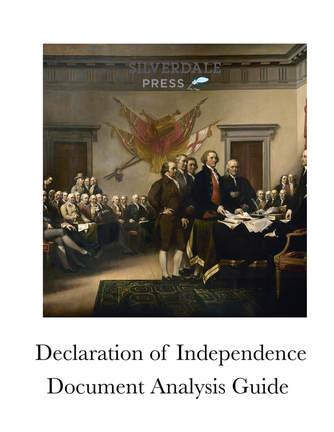 Want your Independence Day to have special meaning for your kids? Sure fireworks and parades are great, but don't you want it to be educational as well? Homeschool families are great at grasping every occasion, even holidays, as learning opportunities. To get to the heart of the holiday, do not neglect the Declaration of Independence. Did you know that there was no formal signing ceremony on July 4, 1776? According to historian David McCullough, "The signing began on August 2, and continued through the year as absent delegates returned to Philadelphia. No formal signing ceremony ever took place. The scene comes closer to portraying June 28, when Thomas Jefferson submitted his first draft of the Declaration. But then, too, there was no such dramatic gathering." Nevertheless, Philadelphia in the year 1776 was was a time of high drama and higher ideals. Those drama and ideals were captured in the Declaration of Independence. That’s why the Fourth of July is the holiday we celebrate, “When in the Course of human events…” The Declaration of Independence has been revered as the nation’s birth certificate. But do your students really know it? Many people think they know it but have never taken the time to study it, to absorb it, to ponder it. And most people are probably only familiar with the preamble. The Declaration actually has five sections: introduction, preamble, grievances, denunciation, and conclusion. Written by a committee of five men--Thomas Jefferson, John Adams, Robert Livingston, Benjamin Franklin, and Roger Sherman—the Declaration is a preeminent American political document. To help your family mark the holiday, we at Silverdale Press have created a primary source document analysis guide for the Declaration of Independence. Our newsletter subscribers received this as a free download. It is so important for our kids to learn history from primary sources. Our kids should not be taught to rely on someone else's interpretation of history, especially when they can examine documents and draw conclusions for themselves. Our White House Holidays series of unit studies relies extensively on primary sources. As you plan your next homeschool year, check out our Labor Day, Veterans Day, Thanksgiving, Christmas, Martin Luther King, and Valentine’s Day unit studies. These unit studies are self-contained. Parents do not need any resources other than what is included. Our unit studies are engaging and rigorous, as well as easy for parents. Plus, they train your kids to use primary sources! Find the Declaration of Independence here. I. Introduction
II. Preamble
III. Grievances
IV. Denunciation
V. Conclusion
0 Comments
Leave a Reply. |
Silverdale PressCheck out our About Page to learn more about us! Categories |

 RSS Feed
RSS Feed